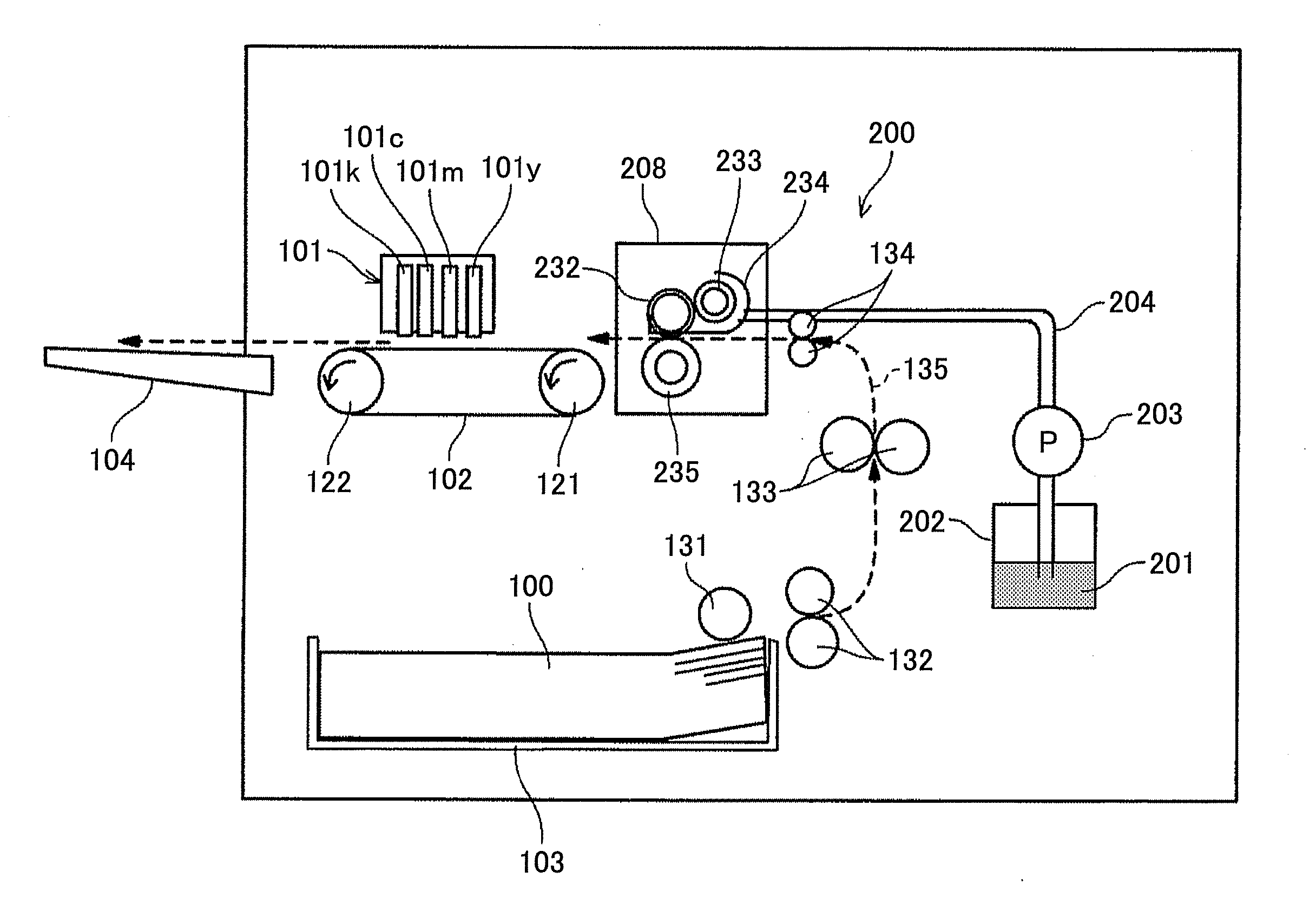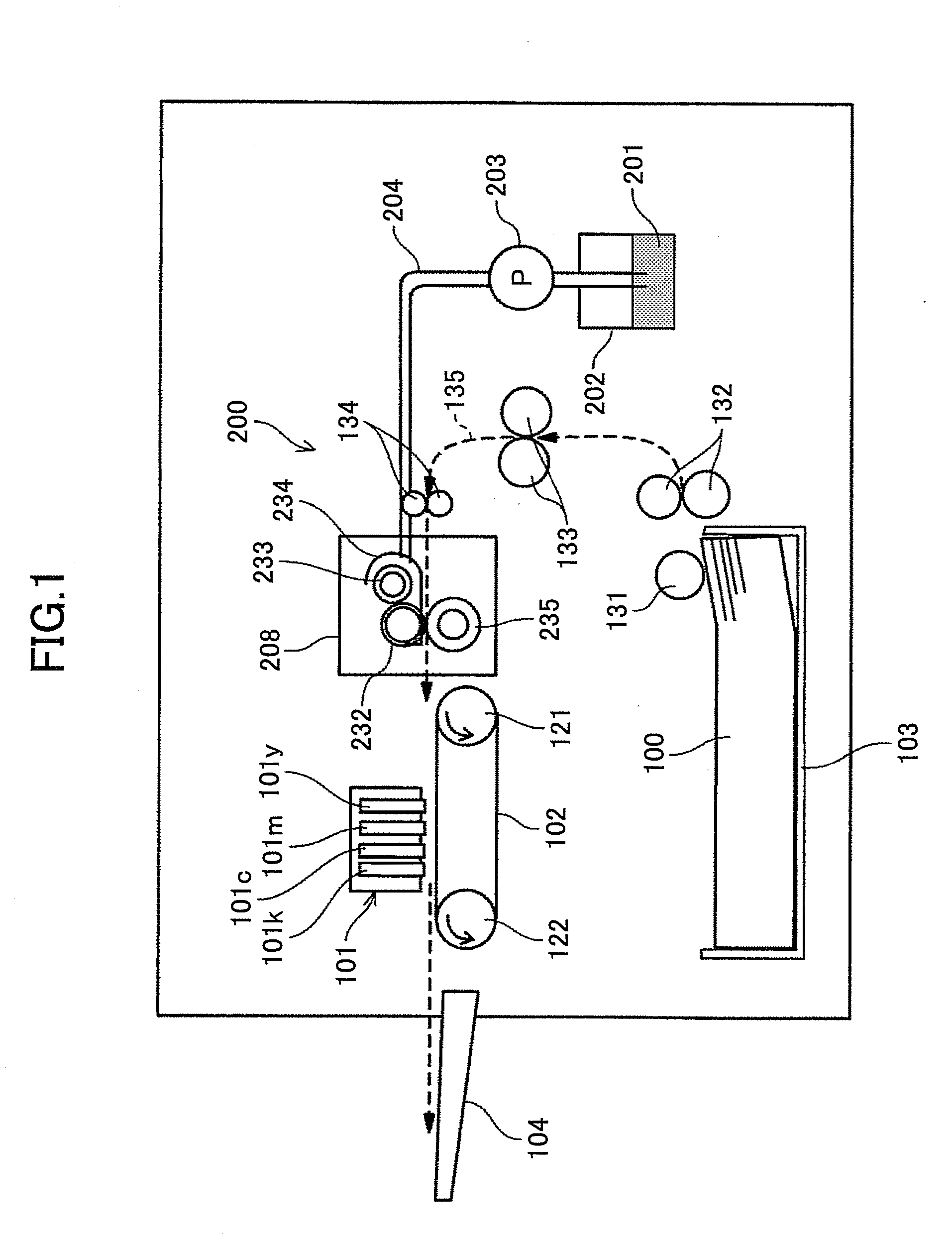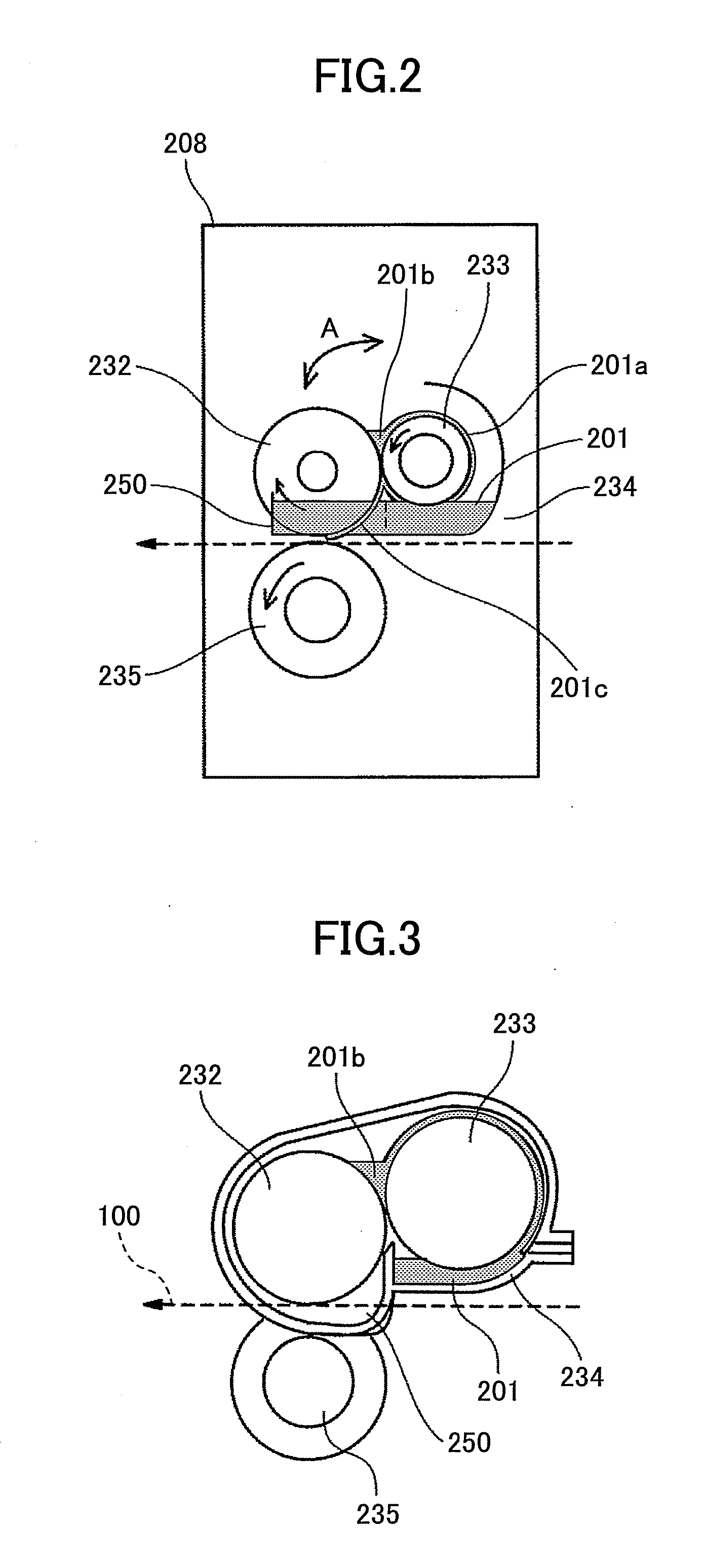Image forming apparatus
- Summary
- Abstract
- Description
- Claims
- Application Information
AI Technical Summary
Benefits of technology
Problems solved by technology
Method used
Image
Examples
first embodiment
[0043]Embodiments that describe the best mode for carrying out the present invention are explained next with reference to the accompanying drawings. First, an example of an image forming apparatus according to the present invention is described with reference to FIG. 1. FIG. 1 is a diagram showing an overall structure of the image forming apparatus.
[0044]The image forming apparatus includes a recording head unit 101 configured to serve as an image forming unit for forming an image by ejecting droplets onto a sheet 100, which is a recording target medium; a conveying belt 102 for conveying the sheet 100; a sheet feed tray 103 for housing the sheets 100; and an application device 200 for applying a treatment liquid to the sheet 100, which is an application target member, on the upstream side of the recording head unit 101 in the sheet conveyance direction.
[0045]The recording head unit 101 has line-type liquid ejection heads for ejecting droplets. Each of the line-type liquid ejection ...
second embodiment
[0081]Next is described an application device according to the present invention with reference to FIGS. 9 to 12.
[0082]According to the second embodiment, a liquid supply head 240 for supplying the treatment liquid 201 is provided at the nip portion of the squeeze roller 233 and the application roller 232. The liquid supply head 240 includes a liquid inlet opening 241 which is connected to the supply channel 204.
[0083]The application roller 232, the squeeze roller 233 and the liquid supply head 240 are provided in such a manner as to integrally sway (move) to change their positions between the condition shown in FIGS. 9 and 10 (referred to as the “application condition” or “application position”) and the condition shown in FIGS. 11 and 12 (referred to as the “standby (non-application) condition” or “standby (non-application) position”. Here, these components are configured to sway together; however, the structure is not limited to this case, and for example, all the components may p...
third embodiment
[0096]The operation of the application device 200 is explained next with reference to flowcharts of FIGS. 15 and 16.
[0097]Here, in processes similar to those of the first embodiment, when the application roller 232 and the squeeze roller 233 are moved to the standby position since a subsequent request for an image output (application operation) is not received within the predetermined period of time after all the previously requested number of images are output and the rotation of the squeeze roller 233 and the application roller 232 is stopped, the squeeze roller 233 and the application roller 232 are respectively rotated for a fixed period of time in the reverse directions from their rotational directions in the application operation.
[0098]In the standby condition, since the squeeze roller 233 and the application roller 232 are vertically disposed one above the other and the valley for entrapping the treatment liquid 201 faces in the lateral direction, most of the treatment liqui...
PUM
 Login to View More
Login to View More Abstract
Description
Claims
Application Information
 Login to View More
Login to View More - R&D Engineer
- R&D Manager
- IP Professional
- Industry Leading Data Capabilities
- Powerful AI technology
- Patent DNA Extraction
Browse by: Latest US Patents, China's latest patents, Technical Efficacy Thesaurus, Application Domain, Technology Topic, Popular Technical Reports.
© 2024 PatSnap. All rights reserved.Legal|Privacy policy|Modern Slavery Act Transparency Statement|Sitemap|About US| Contact US: help@patsnap.com










